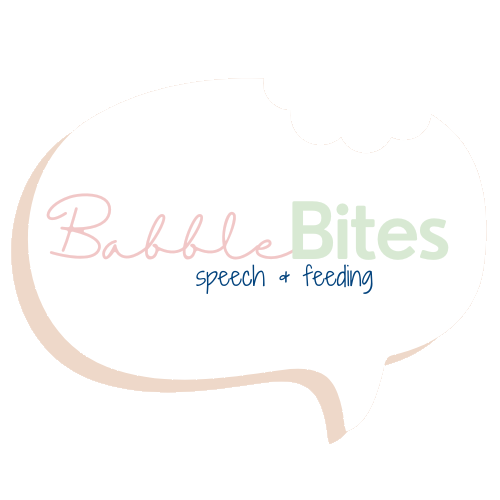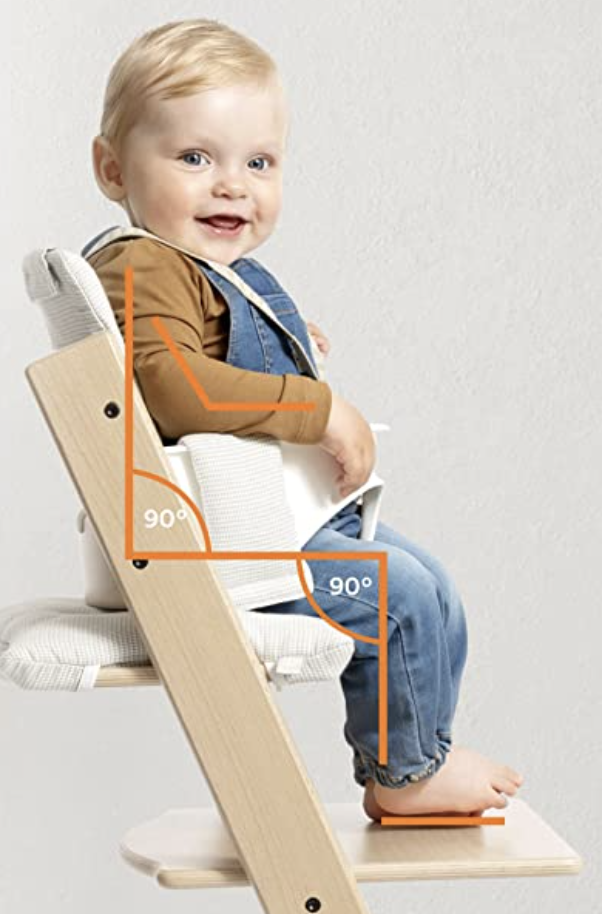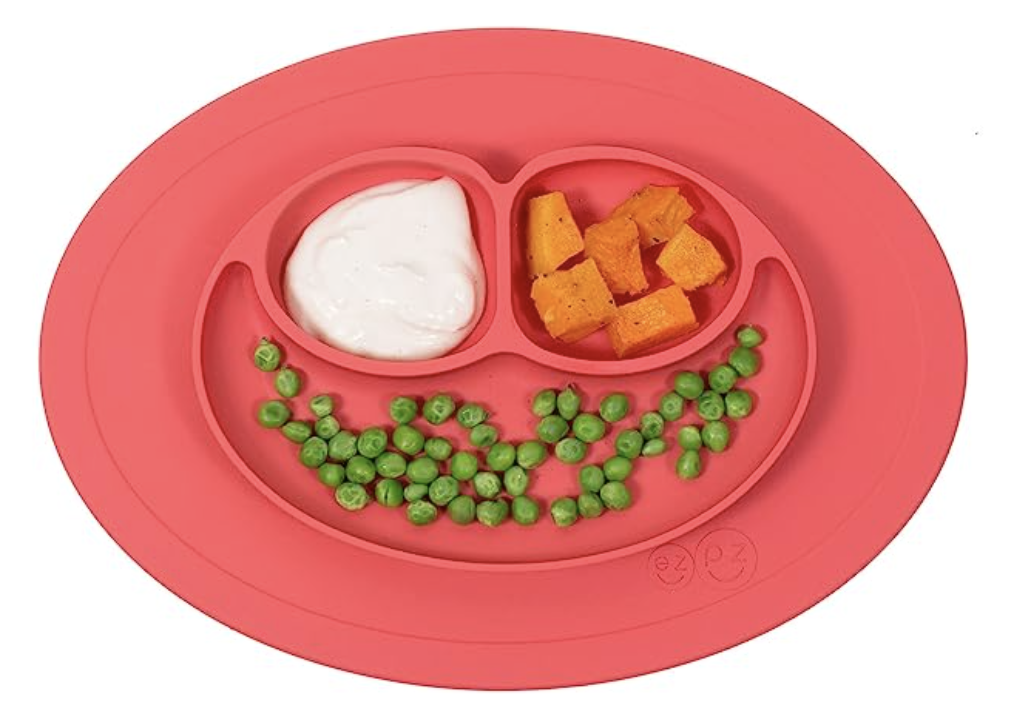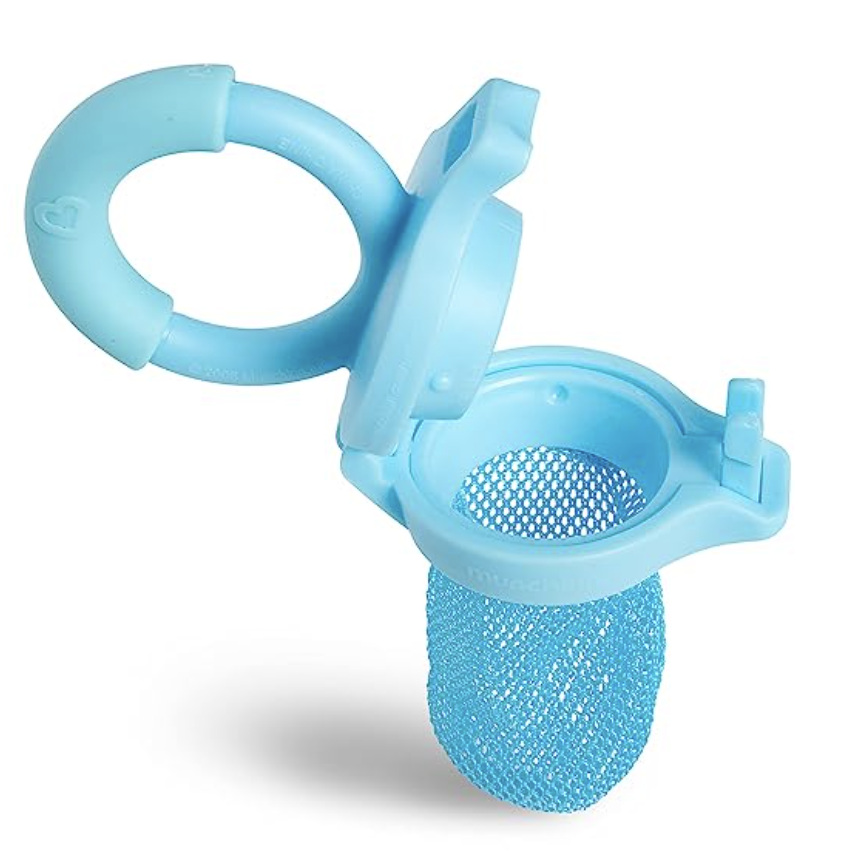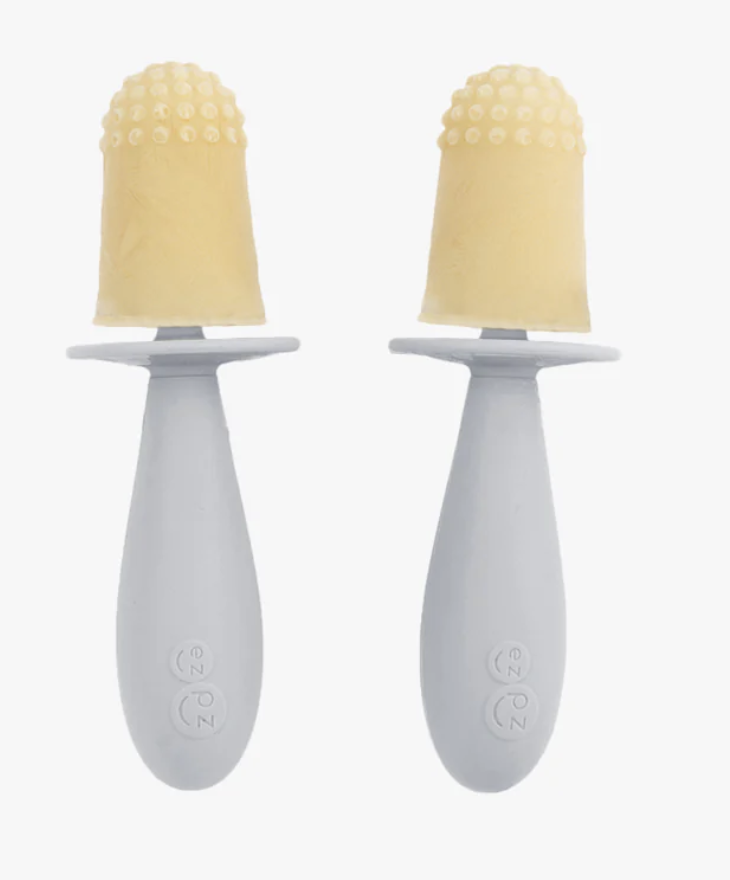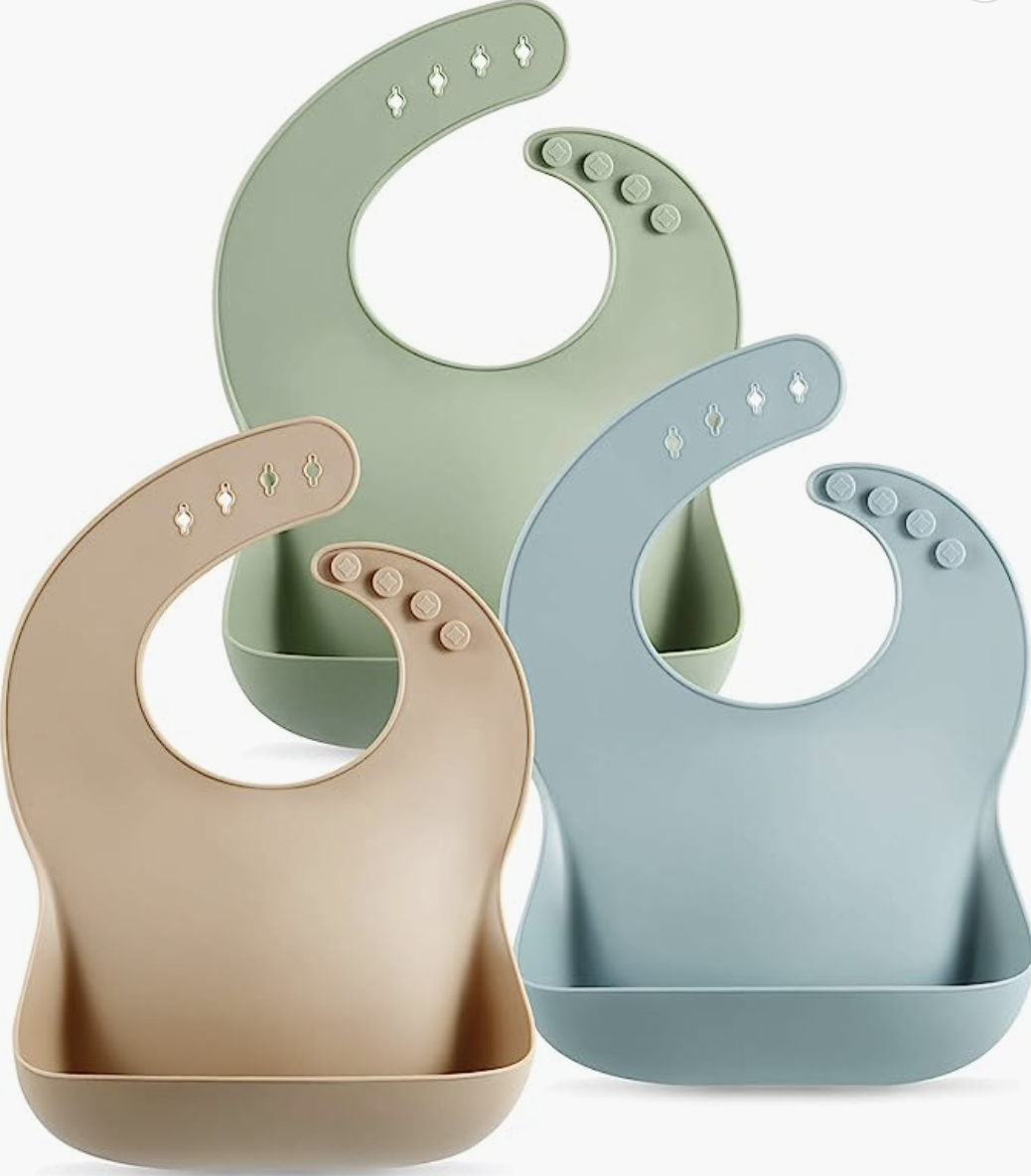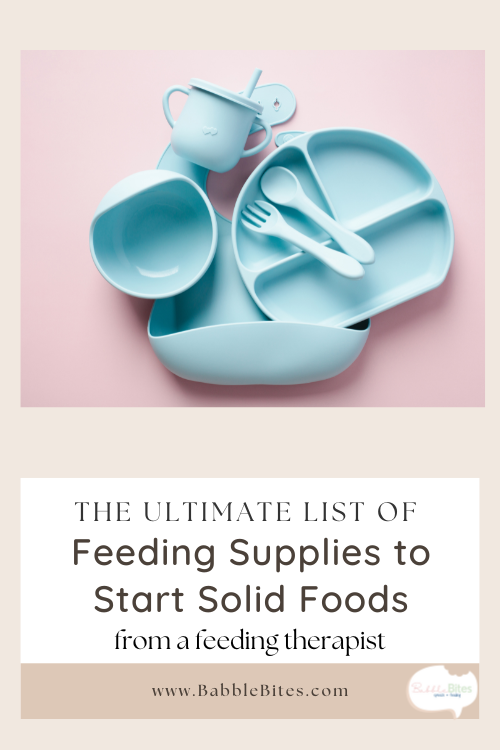The Ultimate List of Feeding Supplies to Start Solid Foods
Whether you’re creating your baby registry, shopping for a new grand-baby or niece/nephew, or your baby is getting ready to eat solid foods, choosing what you need to get for feeding your baby can be a daunting task. There are so many options available, it’s hard to parse out what’s “just marketing,” and what products might actually have a positive effect on your baby’s development. Other lists may also come from different perspectives on why the products are being recommended. Below, I’ve listed my favorite feeding tools and supplies (high chairs, spoons, cups, bowls/plates, and more), as a feeding therapist, and why they benefit your baby’s feeding development.
To learn about how to introduce purees click here, and about how to transition to soft solids click here.
As an Amazon Associate, we earn from qualifying purchases. This means that at no additional cost to you, if you make a purchase through certain links on this site or any related social media platforms, we may make a small commission. We only feature products that we believe in and use ourselves. Your support means the world to us and allows us to host this website. Thank you!
High Chairs
So many high chairs on the market do not provide the appropriate foot support and positioning required for optimal feeding.
Baby’s hips, knees, and ankles should all be at 90 degree angles to provide the core stability required for most successful eating.
If baby’s hips are tucked under, or their feet do not have something to push against, they are wasting a lot of energy trying to support their core (think about how much more uncomfortable it is to eat when you’re slouched down, or when you get seated at a restaurant in a bar stool with no foot rest). Additionally, we want the tray to hit baby between the belly button and breastbone. If the tray is too high, it is difficult for babies to see and reach what is on the tray.
If you’ve already invested in a highchair that doesn’t have these features, it’s possible to get creative with towels, books, and yoga blocks to lift baby up to the correct height in the seat, and to provide some foot support.
Stokke Tripp Trapp High Chair
This one is pricy, but it grows with your baby from infancy into childhood (having a chair that provides foot support and correct seating height for your child in their preschool to elementary years is just as important as when they’re a baby). Both the foot rest and seat height are fully adjustable to grow with your child. You can also detach the tray and bring baby right up to the table to eat with the family, which further enhances feeding development, including more exposure to seeing their family members eat a variety of foods, and helping babies stay in their highchairs longer because they aren’t separated from the family. You can opt for a variety of add-ons, including the baby harness, tray, and cushion. It also comes in a variety of colors to match your decor.
Abiie Beyond Wooden High Chair
This chair is similar to the Tripp Trapp chair above. It has less add-ons (e.g. no infant bucket seat), so therefore your child has to be a little bit older before you can remove the tray and bring them up to the table with this one. A few nice features include the removable plastic tray for easy cleaning, the ease of adjustments, and the wipeable seat cushions which are included. In my experience the tray can be a little tricky to remove, but overall it is a great chair, and comes in a few colors.
Inglesina Fast Table Chair
This one is more affordable and brings baby to the table right off the bat. I would definitely recommend placing a chair underneath the seat for safety, as well as to create a foot rest for core stability. It may also require some additional rolled up towels to add stability. This one is also nice because you can bring it with you to restaurants, and comes in a variety of fun colors.
Spoons
When choosing spoons to feed your baby their first foods, there are a few key features to look out for. The most important feature is the “bowl” shape. It is best to get a relatively flat-bowled spoon, rather than a deep-bowled spoon. This is to help your baby’s lip closure on the spoon to clear the food off into their mouth. We want to avoid scraping or dumping the food into their mouth, or your baby using their front teeth (once they grow in). When the spoon bowl is flat or shallow, they are able to more easily use their lips to be an active participant to fully clear the spoon. This also means that there likely won’t be more food than your baby can handle on the spoon, since it’s not too deep. Another key feature is a narrow spoon that easily fits into your baby’s mouth. Other features to consider are how long the handle is (long handles can make it harder for baby to use the spoon for self-feeding), and if your baby would benefit from a guard to prevent pushing the spoon too far back and gagging. I recommend using 2-3 spoons at a time during spoon feeding when your baby is starting to self-feed, so baby can hold onto 1-2 at a time, and there’s still one left for you to hold (and use to make a trade with baby to get another spoon back to pre-load with food)!
ezpz Tiny Spoon
This company actually has an SLP/feeding specialist as part of the team to help create feeding tools that support feeding development. These spoons have a shallow, narrow bowl shape, gentle silicone texture (soft on gums), “sensory bumps” to help baby know when they’ve reached the edge of the spoon, and an easy to hold handle to promote self-feeding skills.
Olababy Silicone Soft-Tip Training Spoon
This spoon has a shallow and narrow bowl, soft texture for baby’s gums, and easy handle for baby to hold. It can also stand upright, so you do not have to lay the spoon down on the surface, which is great if you’re feeding baby out and about and aren’t sure if the surrounding surfaces are clean.
NumNum Pre-Spoon GOOtensils
These spoons are great to promote self-feeding skills. They have a flat shape with divots that puree can stick to, so your baby can hold the spoon and place it in their mouth, and will not loose as much of the puree in the process.
Munchkin Silicone Trainer Spoons with Guard
These spoons fit the criteria and include a guard in case your baby has a habit of pushing the spoon too far back in their mouth, to the point of gagging.
First Years Take & Toss Infant Spoons
These are affordable spoons that fit the criteria and come in a 12 pack!
Cups
As a feeding therapist, I primarily recommend using open cups and straw cups for water, and for milk once transitioning off of the bottle (check with your pediatrician to see when to introduce water and how much, usually around 6 months). Most babies can learn to drink from open cups as early as 4-6 months (for human milk, formula, or puree), and from straws as early as 6-9 months*. Some babies may pick straw drinking up right away, while others may need to be taught (see below for some cups that can help).
Why straw cups and open cups?
Drinking from a straw is preferred by feeding therapists and SLPs over sippy cups because it helps strengthen the muscles in the mouth to help develop feeding and speech, and promotes a more mature swallow pattern, while sucking from most sippy cups with spouts (as well as continuing bottle drinking, pacifier use, and thumb sucking past ~12 months of age) promote an immature sucking pattern that can result in feeding and speech/articulation delays. Spouted sippy cups are not typically necessary, and were primarily made up to reduce spills and messes, rather than benefit your child’s development. It’s important to choose a thin straw, rather than thick flat straws that don’t promote the optimal mouth position, or straws the require biting to extract liquid.
Drinking from an open cup also supports the development of a mature swallow pattern. Although it can be potentially messy, it’s an important skill that takes time, patience, and practice to learn. Babies will need assistance to drink from an open cup for a while, but it’s worth the effort.
What about water bottles?
For when you’re on-the-go it is possible to find leak-proof straw water bottles that fit the bill which I recommend using when possible. Be aware that some leak-proof straws do require biting, and therefore do not support the benefits of straw drinking in quite the same way. Occasional spouted sippy cup use is fine, we just like to make sure babies and toddlers are also getting lots of practice with straws and open cups when possible, and not solely relying on using sippy cups (unless recommended by your child’s therapy team in particular cases).
*Drinking from straws and open cups can initially cause some coughing while your baby is learning to coordinate everything. It can be helpful to actually start with thin puree from the cup/straw first, as thick liquid/puree moves more slowly and is less likely to cause coughing. Also, it is not recommended for babies under 6 months to have water, so you can start introducing a cup with purees instead. Help your baby get small controlled sips while they’re learning. If they are continuing to cough with open cups and/or straws, mention this to your doctor, as it can be a sign that liquid is going down the wrong way into the lungs, which can lead to pneumonia.
ezpz Tiny Cup
This 2 oz cup is the perfect size and material for introducing open cup drinking. It is soft on your baby’s gums, and holds a small amount of liquid. I recommend filling it up close to the top with liquid, and holding the cup to your baby’s mouth. With the liquid filled close to the top, you will only need to slightly tip the cup for your baby to first learn to slurp the water, rather than dumping the water into baby’s mouth.
TalkTools Nosey Cup
This cup helps teach open cup drinking, as you are able to tilt the cup up without your baby having to tilt their head back due to the cut out for the nose. You are also able to see the liquid and better control the rate at which the liquid is entering your child’s mouth, in order to get small controlled sips. The different colors signify different sizes, so make sure to get the 1.5 ounce size while just starting out.
ezpz Mini Cup + Straw Training System
As I mentioned earlier, this company has a feeding specialist/SLP on the team to help create feeding tools that actually help promote feeding development. On one end of the straw there are sensory bumps to help your baby feel how much of the straw should be in their mouth. This cup can also be used as an open cup as the next size up from the Tiny Cup.
Honey Bear Straw Cup
This straw cup can be used to teach your baby how to drink from a straw. This cup allows you to squeeze the liquid up into the straw to help teach your baby the concept of straw drinking. Over time, you can fade from squeezing the liquid all the way into your baby’s mouth, to only squeezing the liquid part way up the straw, and eventually to your baby independently sucking the liquid up the straw. Make sure you are not squeezing too much liquid into your baby’s mouth. It should only be a small amount to help them initiate sucking. You may also need to cut the straw to make it shorter, as we only want a small amount of the straw in baby’s mouth.
Cuddle Campus Baby Training Cup
This soft silicone cup can transition from an open cup to a straw drinking cup. This cup also has handles that can make it easier for your baby to start holding it independently.
Bowls and Plates
While bowls and plates will not make a huge difference on oral feeding development, they can help encourage food exploration and self-feeding skills, and reduce the mess that gets on the floor (but remember, baby getting messy is an important part of learning to eat).
ezpz Tiny Bowl
This bowl/placemat combo is designed to suction cup to the table or your baby’s high chair for reduced risk of the bowl ending up on the floor. Placing the bowl of food in front of your baby on their tray allows for exploration of the food with their hands in order to smell and taste it before giving them a spoonful, as well as to work on self-feeding skills by dipping/scooping their spoon in the bowl.
ezpz Mini Mat
This plate/placemat combo is perfect once transitioning to finger feeds. It’s a great visual reminder to serve 1 fruit/vegetable, 1 carbohydrate, and 1 protein at each meal.
WeeSprout Silicone Suction Bowls
These ones are nice because they come with the lid for easy storage of left overs, and also have measuring lines from 1-12 oz so you can easily know how much your baby ate. Just make sure to orient the easy release tab for the suction away from baby!
NUK Mash and Serve Bowl
This bowl is great when your baby is transitioning from smooth purees to a mashed texture, before soft solids. You can mash steamed veggies or fresh fruits right in the bowl and serve.
TotAha Silicone Suction Baby Bowl
These bowls have a unique extended and curved side to help assist your little one with scooping food onto their spoon for early self-feeding skills. Make sure to add a little water to the suction cup to help it stick to the table/tray.
Feeding Tools & Teethers
You may be wondering about other feeding tools you’ve seen online or in the store. Here are some extra feeding tools and teethers that can be used to help advance your baby’s feeding skills. If your child is in feeding therapy, consult their feeding therapist about what tools will be most beneficial for your child’s current skill level.
Silicone Baby Safe Feeders
These are great to introduce when you are transitioning from smooth purees to soft solids. You can place soft pieces of fruits and vegetables inside to start teaching your baby to chew, and it will come out of the small holes as puree into your baby’s mouth. I recommend using the smallest size so your baby can place it to the side between their gums and chew, rather than just sucking on it. You can also place frozen fruits inside to help ease teething pain.
Munchkin Fresh Food Feeder
These are similar to the silicone feeders above, just a different texture. These ones are nice because you can more easily control the size/shape to make sure it’s small/thin enough so baby is actually able to chew and not just suck on it, although they’re a little harder to clean.
ezpz Tiny Pops
These mini teething popsicle molds are just 0.5 oz and are thin enough for your baby to place into their molar area to promote munching and tongue lateralization. They can be used with formula, human milk, or smoothie/puree.
Ark Therapeutic Baby Grabber
This teether, designed by an SLP, is perfectly shaped for your baby to hold onto and place into their mouth to promote tongue lateralization (side-to-side tongue movement needed to move solid food around the mouth), jaw strength, and munching.
ZoLi Bunny Teether
This dual-nubbed teether promotes munching and side-to-side tongue movement.
Ark Therapeutic Y-Chew
This oral motor tool, designed by an SLP, has three different branches to chew on which each provide different sensory input, and helps baby learn to tolerate different textures in their mouth.
Baby Toothbrushes
Now that baby is eating solid foods, it’s even more important to make sure there’s no food left behind, and keep those teeth clean. Toothbrushes also help your baby learn to tolerate new textures in their mouth, as well as can help work on tongue lateralization by touching the toothbrush to the sides of your baby’s tongue.
Banana Toothbrush
This gentle silicone toothbrush can be used to brush baby’s gums and first teeth, as well as to provide gentle oral stimulation around their mouth to help them tolerate new textures.
Papablic Electric Toothbrush
This baby electric toothbrush has real bristles for cleaning baby teeth. The gentle vibrations can help provide even more sensory input for your baby’s mouth.
Supplies for Less Mess
If you’ve read my guides for introducing purees and solids, you know as a feeding therapist I recommend letting your baby get messy during feeding, and if you’ve read this post here, you’ve learned why getting messy is so important for feeding development. While I definitely recommend letting your baby get messy, I know this can be challenging with the clean-up that ensues. Here are some feeding supplies that actually promote messy eating because they will help you feel a little less stressed about the mess.
Bumkins Baby Splat Mat
This machine washable mat can be placed under your baby’s high chair to protect your floors during feeding, and to help ensure food and spoons fall onto a clean surface.
Theo’s Disposable Biodegradable Splat Mats
For an even quicker clean-up, these mats are disposable and biodegradable.
WOMUMON Splat Mat
These mats are large, wipeable and have a non-slip bottom for easy clean-ups after mealtime with baby.
Tiny Twinkle Mess Proof Baby Bib
These liquid-resistant eating smocks can cover your baby’s shirt, while still leaving their hands and arms exposed for messy play with food. It also has a pocket to catch food that falls into their lap. It comes in a ton of cute patterns and colors, and with and without the ruffle sleeves.
PandaEar Silicone Bibs
These silicone bibs are water-proof and have a wide and sturdy pocket to catch falling food and liquid. The pocket can sometimes get in the way of the tray and make it difficult for baby to reach their food or sit comfortably. If you’re at home, letting baby eat just in a diaper might be the way to go to avoid getting stressed about their clothes getting dirty or ruined, and allowing for maximum comfort for your baby without bibs and long-sleeved aprons restricting their movement.
This website and information on this blog post is provided for educational purposes only. It is not meant as medical advice, intended to replace a speech-language or feeding assessment, therapy from a speech-language pathologist, or serve as medical or nutritional care for a child. It is recommended that you discuss any concerns or questions you might have with your Speech-Language Pathologist, pediatrician, and medical team, and develop an individualized team plan specifically for your child.
Follow us on Instagram for “bite-sized” information on each blog post:
Click below to pin this post to Pinterest to save for later and share!
